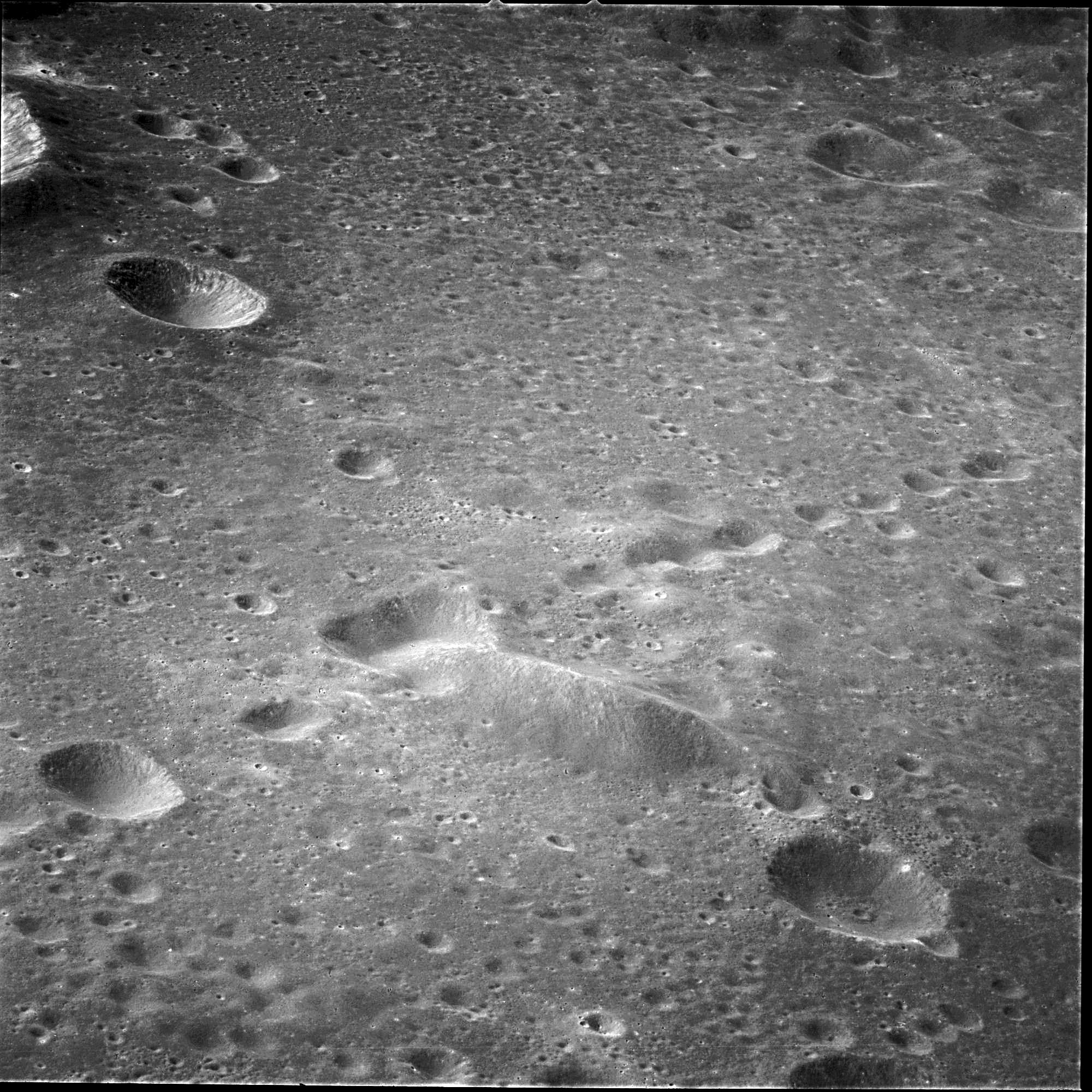August 18, 2018
A Chain of Evidence
Originally published June 5, 2009

Apollo 10 image (AS10-30-4327) from NASA Public Affairs Office by way of the much appreciated Apollo 10 Flight Journal
One of the most famous, but little seen, crater chains crosses the floor of Mendeleev crater. Of course, this large crater (313 km diameter) is on the central farside and can only be seen directly by orbiting astronauts or robotic probes. When it was discovered back in the mid-1960s it was interpreted as a volcanic crater chain. We know on Earth that eruptions along linear fissures produce volcanic crater chains, and there was no other reasonable answer for this chain on the Moon. And if these craters were volcanic, then maybe most lunar craters were. But since then we have learned to recognize secondary impact crater chains, made by the bombardment of strings of ejecta from the formation of larger craters. In 1978, US Geological Survey scientists Don Wilhelms and Carol Ann Hodges pointed out (Fig. 56) that the Mendeleev Chain points back 850 km to Tsiolkovsky crater, its apparent source. This image also shows an interesting relationship between the chain and a hill on the floor of Mendeleev. The elongated peak extends significantly into an odd double crater of the chain. The peak could not have been there when the chain formed so it must have moved there since. Because all evidence is that this hill is part of an inner basin ring and such rings come into existence during the formation of an impact crater, the peak must be older than the chain. Hmm. The most likely explanation is that downslope movement of material has reduced the peak's original height and increased its basal width. Erosion does exactly this to volcanoes on Earth - and time does the same to people, making us less tall and somewhat wider.
Chuck Wood
Technical Details
Apollo 10 photography
Related Links
Bussey & Spudis plate 66
Yesterday's LPOD: Dullsville
Tomorrow's LPOD: Classic View
COMMENTS?
Register, Log in, and join in the comments.



